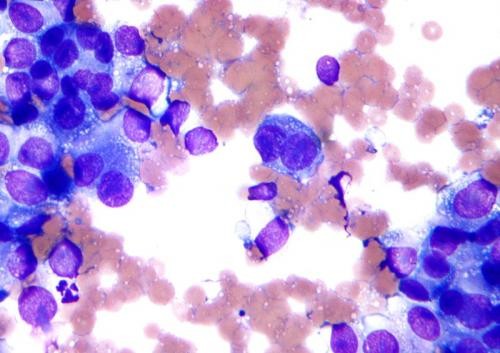Five or more blistering sunburns before age 20 may increase melanoma risk by 80 percent

The risk of developing the most deadly form of skin cancer, melanoma, was more closely related to sun exposure in early life than in adulthood in young Caucasian women, according to a study published in Cancer Epidemiology, Biomarkers & Prevention, a journal of the American Association for Cancer Research.
"Our results suggest that sun exposures in both early life and adulthood were predictive of nonmelanoma skin cancers, whereas melanoma risk was predominantly associated with sun exposure in early life in a cohort of young women," said Abrar A. Qureshi, M.D., MPH, professor and chair of the Department of Dermatology at Warren Alpert Medical School of the Brown University and Rhode Island Hospital in Providence.
After following 108,916 Caucasian registered nurses for about 20 years, this study found that those who had at least five blistering sunburns when they were 15 to 20 years old had a 68 percent increased risk for basal cell carcinoma (BCC) and squamous cell carcinoma (SCC) of the skin, and an 80 percent increased risk for melanoma. Those who were exposed to the highest amounts of cumulative ultraviolet (UV) radiation in adulthood had no increased risk for melanoma, but had a 2.35-fold and 2.53-fold increased risk for developing BCC and SCC of the skin.
"Pattern of sun exposure was not uniformly associated with the risk for all the three main skin cancers we see in the United States, suggesting that there are some differences in the pathophysiology of these skin cancers," said Qureshi. "An individual's risk of developing skin cancer depends on both host and environmental risk factors. Persons with high host-risk traits, such as red hair color, higher number of moles, and high sunburn susceptibility, should pay more attention to avoid excessive sun exposure, especially early in life."
Participants were from the Nurses' Health Study II. At the time of registration they were between the ages of 25 and 42 and resided in 14 different states. At registration, the participants responded to a baseline questionnaire about their medical histories and potential risk factors for skin cancers, including number of moles on legs, number of blistering sunburns between age 15 and 20, and family history of melanoma.
Updated health information was collected every two years for about 20 years. During this time, participants answered additional questions related to skin cancer risk, including updated family history, tanning bed use, smoking and alcohol consumption habits, and body mass index.
The researchers took into account the duration participants spent residing at different locations in the United States during follow-up to calculate the cumulative UV exposure for each individual, and then grouped the participants under three categories of UV exposure: low, medium, and high baseline annual UV flux.
About 24 percent of the participants had experienced painful blisters as a child or adolescent, about 10 percent had more than five blistering sunburns between ages 15 and 20, and about 24 percent had used tanning beds.
Of the study participants, 6,955 were diagnosed with BCC, 880 were diagnosed with SCC of the skin, and 779 were diagnosed with melanoma. Of those with melanoma, 445 had invasive cancer.
After adjusting for potential confounders, Qureshi and colleagues found a strong dose-response relationship between cumulative UV flux and risk for BCC and SCC of the skin, but no such association was seen for melanoma. Those who had at least five blistering sunburns between ages 15 and 20 had increased likelihood for developing any of the three types of skin cancers, but the greatest risk was for developing melanoma.
The researchers also found that the host-risk profile may alter an individual's risk for developing sun exposure-associated, nonmelanoma skin cancers.
"Parents may need to be advised to pay more attention to protection from early-life sun exposure for their kids in order to reduce the likelihood of developing melanoma as they grow up," said Qureshi. "Older individuals should also be cautious with their sun exposure, because cumulative sun exposure increases skin cancer risk as well."
May 30, 2014 05:37 PM EDT





